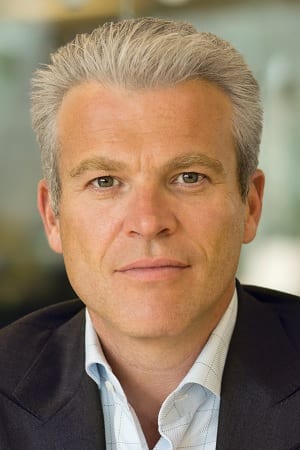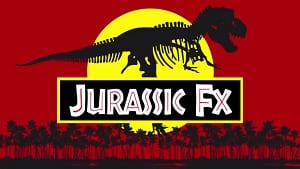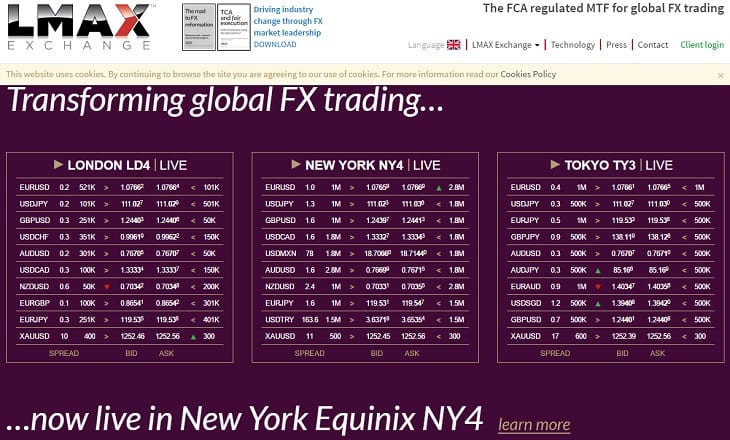LeapRate Exclusive Interview… The issue of transparency and fairness in the FX markets has been a hot one of late, with many institutional and retail players making changes in the way they trade and hedge (and with whom they trade and hedge) as a result.
We are pleased to speak today on these topics and more with David Mercer, CEO of Multilateral Trading Facility LMAX Exchange.
LR: Hi David, and thanks for joining us today. It has been a bit more than a year since our last interview, could we please briefly introduce LMAX Exchange for the benefit of our new readers and the discuss what LMAX Exchange has been up to and its latest offerings?

David Mercer, LMAX Exchange
David: Sure. As an introduction, LMAX Exchange is the leading FCA regulated MTF (Multilateral Trading Facility) for trading FX, precious metals, equity indices and commodities. As a regulated MTF, LMAX Exchange offers exchange quality execution.
Similar to equity exchanges, LMAX Exchange operates a central limit order book driven by streaming, firm liquidity from the top global banks and non-bank financial institutions. LMAX Exchange doesn’t run risk, it simply matches orders, and unlike ECNs, the execution is not quote driven and liquidity providers don’t have “Last Look” or the ability to re-quote.
This is a unique business model in the industry, enabled primarily by our proprietary, ultra-low latency technology. At LMAX Exchange, we are ‘exchange evangelists’, we believe that liquid products, such as spot FX, are best traded on exchanges; we believe in open market access and transparent level playing field to all market participants, regardless of status, size or activity levels.
The last 12 months for LMAX Exchange have been characterised by continued growth across the business – we expanded our technology infrastructure, which now includes matching engines in all major FX centres (London, Tokyo, New York) and we significantly increased presence in our key client segments. One of these segments is FX brokers – our client base now includes a growing number of brokers from over 100 countries. In addition to our growth in this segment over the last 12 months, we also improved our offering for the brokers by launching a bespoke pricing stream with very tight spreads on our no ‘last look’ streaming limit order liquidity.
LR: So, what differentiates LMAX Exchange? And why should brokers choose it as their main trading venue?
David: Number one – it’s the security of your trading, you trade with an FCA regulated broker, with an unblemished disciplinary history, something which cannot be said for all the brokers and venues out there today. Brokers trade on a regulated multilateral trading facility, which is completely transparent and anonymous. It is open access to all traders, big and small, so you trade on the same prices as the largest hedge funds and the largest banks in the world.
Furthermore, you trade on some of the tightest spreads in the marketplace. In fact, this year, we have come up with even better pricing at top of the book, and, in smaller size, so that we can be at the very top of your aggregated streams.
And, finally, at all times, we have full depth, and up to 50 million available at all times in the LMAX Exchange central limit order book.
So, that, aligned with a level playing field, the transparency, and the speed of technology which is built in-house, I think makes a winning combination, for you and your trading strategies.
LR: LMAX Exchange has been a long time campaigner against the ‘Last Look’, calling upon the regulators to rid the market of this practice, that’s open to abuse. In your latest video series ‘the Jurassic FX’ you are making this point very clear by portraying the ‘Last Look’ practice as an extinct creature that has no place in the modern FX world – can you please elaborate on your views?
David: ‘Last Look’ is the practice used by LPs, enabling them to re-quote or withdraw quoted prices after the client’s order has been received. Dating back to early 1990s, ‘Last Look’ was introduced as a business solution to address the gap in technology capabilities between various market players. In the last few years, ‘Last look’ has been brought into question by FEMR and by the FX industry, as a whole, highlighting its potential for abuse. ‘Last Look’ does not exist in any other asset class.
At LMAX Exchange we don’t believe in ‘Last Look’ – it’s an archaic practice that is no longer needed in the context of modern trading technology. As an execution venue, LMAX Exchange should be an example for the whole FX industry and a proof of concept that LPs can price profitably without ‘Last Look’. Every day, all of our 25 LPs, which are the world’s largest banks and non-banks, price without ‘Last Look’.
’Last Look’ quotes are nothing more than a phantom liquidity and by putting in the order based on ‘Last Look’ quotes, the customer simply reveals to the market the intention to trade – the information that can be subsequently used against the customer. ‘Last Look’ takes away the control over execution costs, as by trading on ‘Last Look’ prices the customer loses control over 1) execution price; 2) fill rate; 3) who sees their intention to trade during the hold time (or so called ‘Last Look’ window).

For example, Barclays was fined $150 million in November 2015 for cancelling client orders in the ‘Last Look’ window that would have proven unprofitable. It has also become clear that Effex used ‘Last Look’ to the detriment of FXCM clients in a February 2017 filing. Finally, a lawsuit against Deutsche Bank has been allowed to go ahead in New York, with Judge Lorna Schofield refusing the bank’s motion to dismiss investment manager Axiom Investment Advisors’ claims that the bank profited from using ‘Last Look’. There has also been a further action launched by US law firm Scott+Scott, representing 40 European clients, to pursue a claim related to Deutsche’s use of ‘Last Look’.
LR: Given your strong conviction about the need for more transparency and fairness in the FX market, what do you think the industry should do?
David: I believe that there is more urgency than ever for the regulators and industry participants to lead with impactful reforms to improve transparency and fairness in the global FX market and put an end to a multi-year regulatory inertia. Right now we find ourselves at a time when the market sentiment still suggests a lack of trust in FX trading, the world’s largest asset class. We can no longer preserve the status quo and need to lead with reforms that will secure the future and integrity of our industry.
LR: Finally, what can the customers expect to see from LMAX Exchange in 2017?
David: 2017 started very well for LMAX Exchange – the volatility is back in the FX market and our efforts to continuously improve our liquidity, service offering and the breadth of our distribution capabilities are paying off. So I am very optimistic about 2017 and look forward to many more customers worldwide experiencing the LMAX Exchange streaming no ‘Last Look’ liquidity, whilst benefiting from 1) our tighter spreads, 2) from the precise, consistent execution and, 3) from lower trading costs, only possible in the exchange trading environment that LMAX Exchange offers.
